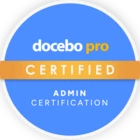We teach our learners how to operate, maintain, program and service industrial robots. We previously taught these procedures using written manuals, but have shifted to video based courses hosted in Docebo. This step from written manuals to videos is a major improvement, but I’m wondering if it would be possible to make our courses more interactive and interesting by creating them in a SCORM authoring tool. I have almost no experience with SCORM, so if you are a content creator, it would be really helpful if you could share your thoughts on this 😀
The following are some questions that immediately spring to mind:
- Is SCORM a suitable format for teaching technical procedures?
- In what ways could SCORM be used to make learning technical procedures more interactive? Are there any specific examples you could share?
- Would a simple tool like Articulate Rise be enough or would we need a more sophisticated tool like Storyline?
- Would you recommend creating SCORM courses in-house or out-sourcing them to a professional?
- Are there any other mediums other than SCORM that we should be considering?
Any thoughts, tips, advice would be greatly appreciated!








